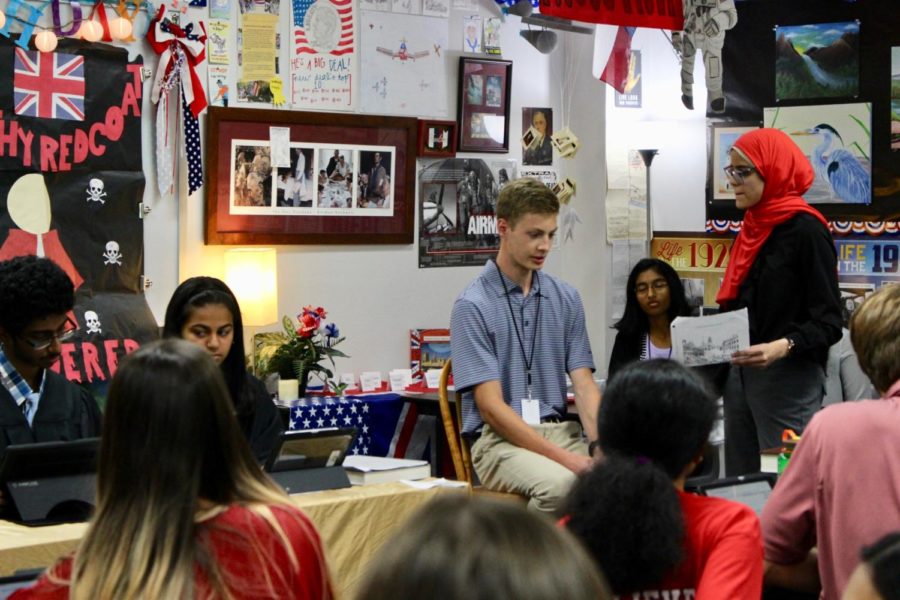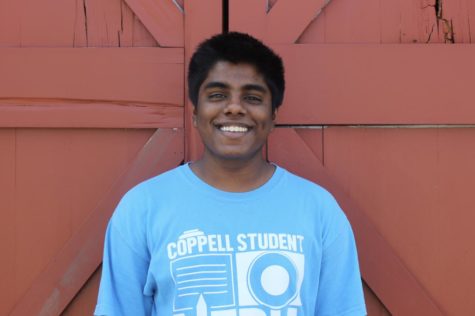On the Spot: Students step back in time to recreate Boston Massacre through mock trial (with video)
Coppell High School students in AP United States History teacher Diane de Waal’s class conduct their annual mock trial. Students are given roles to recreate the Boston Massacre trial to determine what happened that day
September 23, 2019
Today, students in Coppell High School AP U.S. History classes traveled back in time to the pre-revolutionary period, bringing the Boston Massacre trial back to life.
Students recreate the setting of the Boston Massacre trial to determine what actually happened on the night of March 5, 1770, when five British soldiers were accused of murdering innocent citizens.
APUSH classes turned into Colonial courthouses allowing students to feel the intensity of the courtroom 249 years ago.
“It’s something you wouldn’t normally do in school,” APUSH teacher Diane de Waal said. “So it really helps to get in touch with the feelings of the pre-revolutionary period and what the animosity was especially toward the British soldiers.”
Students are assigned roles such as witnesses, judges and attorneys.
Witnesses familiarize themselves with what they saw and heard, while working with attorneys to decide what approach should be taken to make their case look genuine. Students assigned as judges are to manage the courthouse and listen to both sides of the trial, deciding which one has better evidence.
“It’s a lot more dynamic than a typical project,” junior Cole Tramel said. “You can respond to the other people’s arguments as its happening instead of presenting your argument and sitting down.”
Students had little more than a week to prepare for the trial. Attorneys worked with witnesses to create questions that would make their side look authentic, while also creating questions to challenge the opposing side. Judges learned the formalities of a courtroom to best decide how to handle the case.
“We had a legal brief and then we had to write witness questions, cross-examination questions and counterarguments. I spent a couple hours every single day for a week working on it,” junior Yiwei Shen said.
With students putting in much effort into recreating the trial, it allows them to truly understand a major event in American history from different perspectives and interpretations.
“History is the art of interpretation,” de Waal said. “When we look at big questions in history, we have to look at them from multiple perspectives and understand what the historical evidence is that supports each side.”
Follow Nishant on Twitter at Nishantnm1











